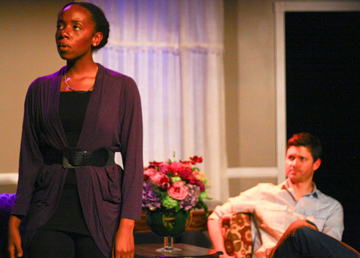Community members and residents in Los Angeles District 8 gathered Wednesday night to discuss the increasing problem of blatant prostitution in the area. The meeting was held at the Southwest Community Police Station where the Los Angeles Police Department (LAPD) provided a platform for frustrated residents to be heard and even offer solutions to this growing issue. Council District 8 is lead by recently re-elected Bernard Parks, Sr. and the meeting was facilitated by his Chief of Staff, Bernard Parks, Jr.
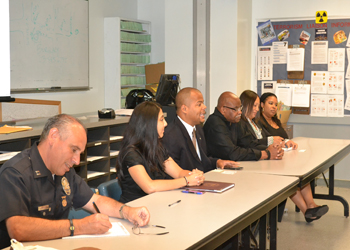
LAPD Captain Vito Palazzolo began by recognizing that prostitution along Western Avenue between 27th and 30th streets has been a problem for many years and the old tactics simply haven’t worked long term. He noted that police make many arrests, however, he said the police can’t simply ‘arrest’ their way out of the problem. When those detained leave the street corner, a new group takes their place. Pimps are more aggressive than ever, working with girls as young as 12 who are not locals and traveling around the state in a circuit. Pimps are also paying more attention to the schedules of vice units and working later and later in the night to avoid being caught.
Residents complained about a lack of response from the police department, their children witnessing the activities, needing more patrol cars and protection. Some even implied that a prostitution sweep was done right before the District 8 elections in March for the sole purpose of getting their votes. Councilman Parks’ Chief of Staff denied any collusion between their office and the police department, but he said he would investigate when another sweep could take place.
Though community members expressed the feeling that the police department had been doing very little to stop prostitution, Lieutenant Andre’ Dawson said things are happening behind the scenes. The Vice Unit has partnered with the FBI’s Innocence Lost initiative that focuses on prosecuting pimps for human trafficking. He explained that it can take up to two years to successfully prosecute a pimp especially if law enforcement has difficulty getting impressionable, underage prostitutes to sign crime reports against pimps. However the City’s prosecution of “johns,” men who solicit sex with prostitutes, seems to be effective. The fines are very expensive and the repeat offender rate in the area is very low. Budget constraints were also blamed for the police not being able to have a better presence. 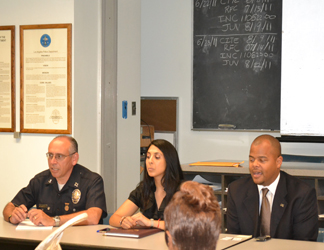
According to District Director Christine Dixon, the city has already begun discussions about trimming trees, repairing lights and adding signs to deter illegal activity. One resident noted that some things are working such as the police photographing suspected prostitutes, shining lights into occupied parked cars and having police cars periodically parked on the corners.
Captain Palazzolo encouraged the community’s involvement, reiterating that they are a part of the long-term solution. Activist Naji Ali informed residents of the work already started within faith-based organizations that offers prostitutes shelter and services as the groups walk through affected neighborhoods. The City Attorney’s Office also has a program that solely focuses on providing jobs for women who were once involved in prostitution, but due to budget restraints it can’t be expanded right now.
So far this year, 132 prostitutes have been arrested and 18 johns were detained in the month of June alone. During the NBA All-Star weekend in February, 45 pimps were arrested and five girls were rescued, ranging from age 13 to 17. LAPD plans to train more uniformed officers to handle vice related crimes and wants to continue working with residents and businesses to stop prostitution in the area. They will also screen a documentary focused on underage prostitution called “Flesh” Thursday, September 15th from 7-9pm to further inform the community.
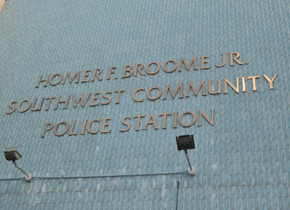 If anyone witnesses non-violent activity in real time, they can contact the LAPD at (877) 275-5273. Tips can also be provided by calling (213) 486-0910 or follow the LAPD on Twitter at lapd_southwest.
If anyone witnesses non-violent activity in real time, they can contact the LAPD at (877) 275-5273. Tips can also be provided by calling (213) 486-0910 or follow the LAPD on Twitter at lapd_southwest.










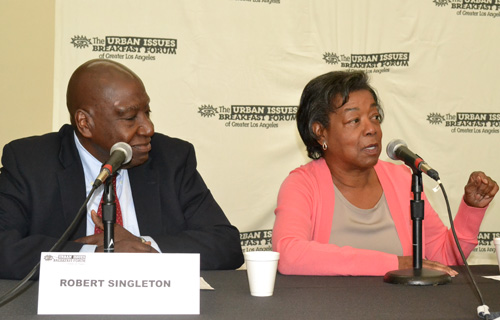
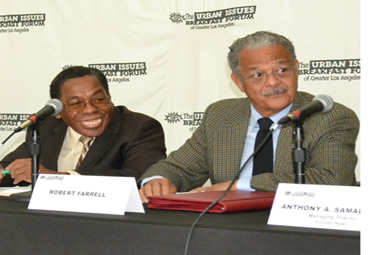 Robert Farrell remembered how black women at UCLA were practically non-existent because the few blacks enrolled were male athletes. Retired California Senator Diane Watson was one of the few black women on campus at the time. As an African American woman who graduated from UCLA, it’s hard for me to imagine a time like that. Though she is not the first, a young black woman by the name of Jasmine Hill is currently student body president of UCLA.
Robert Farrell remembered how black women at UCLA were practically non-existent because the few blacks enrolled were male athletes. Retired California Senator Diane Watson was one of the few black women on campus at the time. As an African American woman who graduated from UCLA, it’s hard for me to imagine a time like that. Though she is not the first, a young black woman by the name of Jasmine Hill is currently student body president of UCLA. 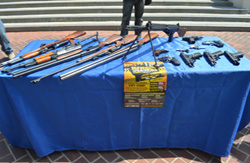
 Villaraigosa said guns and gangs are the two main issues that threaten the safety of residents in Los Angeles. Because of the success of programs like the Gun Buy-Back, cities all over the country are following L.A.’s lead and implementing similar programs of their own.
Villaraigosa said guns and gangs are the two main issues that threaten the safety of residents in Los Angeles. Because of the success of programs like the Gun Buy-Back, cities all over the country are following L.A.’s lead and implementing similar programs of their own. 